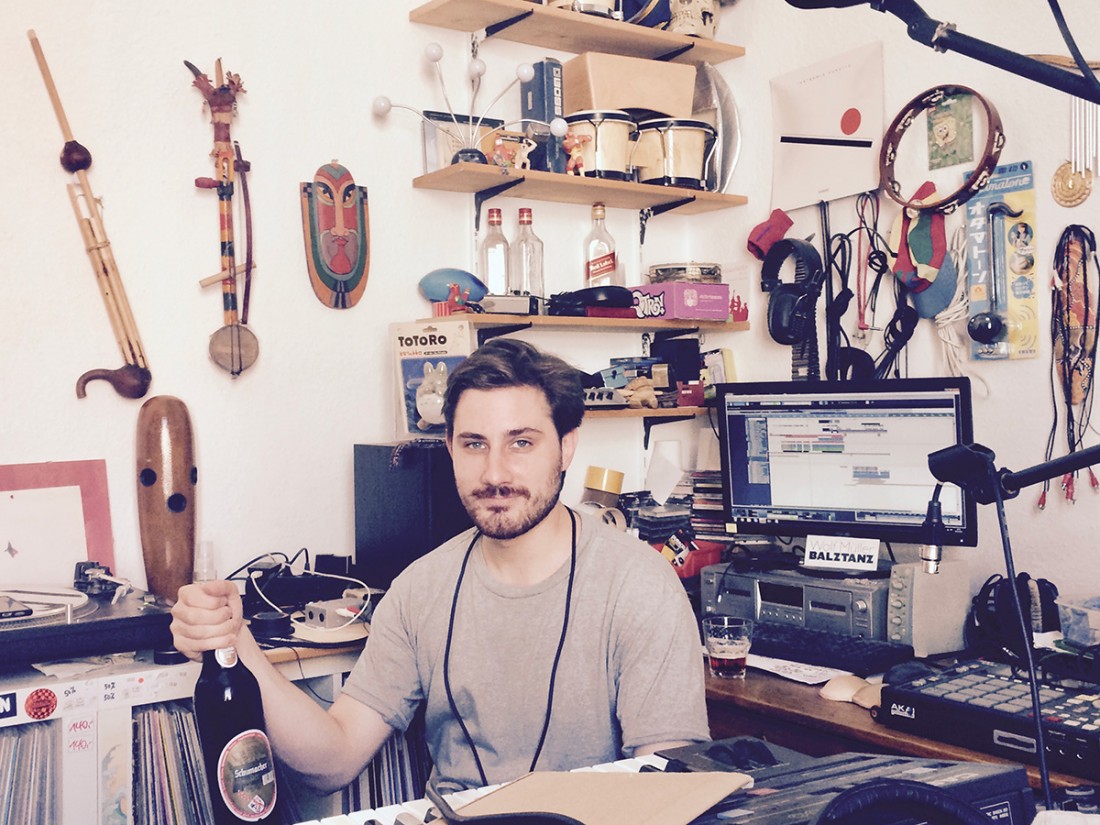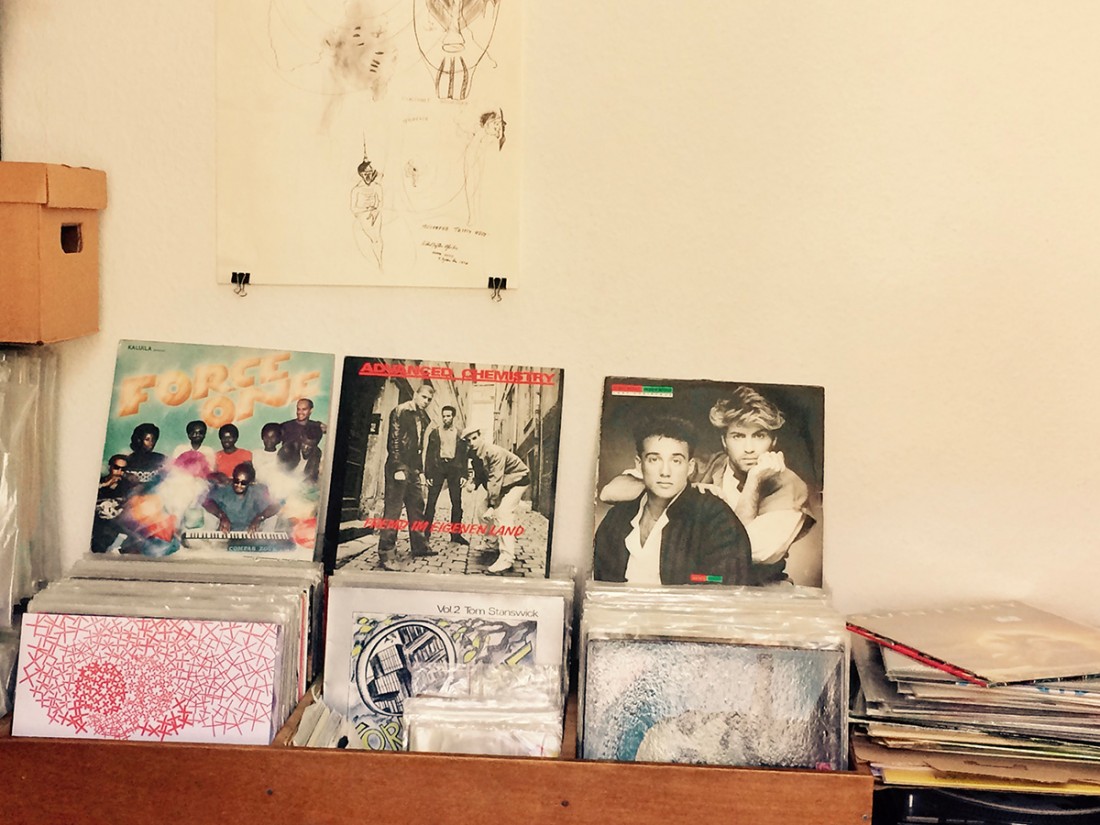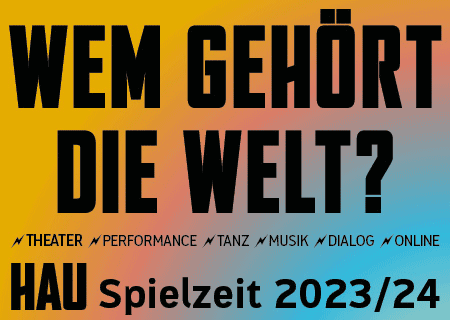WONKY DRUMMING WITH
The Salon des Amateurs in Düsseldorf is considered to be one of the best places to dance in Germany. By day a cozy café with neat leather sofas and the customary long bar the room turns into a little dance Mecca with international renown by night. The Salon owes its reputation less to the big out-of-town star DJs than rather to its in-house residents. DJs such as Lena Willikens, Vladimir Ivkovich, Marc Matter er Tolouse Low Trax have established a kind of playing records that might be called eclectic, in which obscure musical worlds collide for which you have to browse in the flea market boxes and record stores of the world for a long time. You might say about it: “anything goes” if only this catchword weren’t steamrolled so postmodern.
Anything goes for Jan Schulte as well, record shaman, Jew’s harp virtuoso and improvisation artist by trade, who has learned this trade at the Salon as well. He releases his percussive tracks often times situated in the lower bpm range under pseudonyms like Wolf Müller, Bufiman, Goofy Man or as part of the voodooist Krautrock band Montezumas Rache. Additionally, he collaborates with artists such as Young Marco (as Young Wolf), Cass. (as Wolf Müller & Cass.) or the drummer of Oracles Niklas Wandt (their mutual album will be released this year). The author of this text had also already had the pleasure to work in the studio with Jan Schulte, as well as play together at Salon and other beautiful places (as part of Camp Inc. & Bufiman).
Although he is only in his early thirties, Jan Schulte has a discography to show on which you can easily lose track of. Next to tracks of his own, released on labels like Versatile, Dekmantel, International Feel, or Themes For Great Cities, he produces edits or releases compilations such as “Tropical Drums Of Deutschland”, a collection of rhythm-loving scurrilities from the German-speaking world that beams the listener to the virtual islands with names such as “Tagtraum eines Elefanten“ (Daydream of an Elephant) or “Troubadix in Afrika“.
On this sultry midsummer day, you might want to beam yourself to an island as well. Jan invites into his tropical paradise – the Wolf Müller Flanger Studio. Obscure records, instruments, and relics, such as the famous skulls he often brings along to his shows, are piling up in the small room. Yesterday he did return from a festival in England. Exhausted, but with the usual thirst for beer. We are having Altbier from bottles that I estimate as containing two liters. It is possible that we people from Cologne are exaggerating since we are drinking our beer from handy test tubes. But these bottles really seem to be made for elephants on tropical islands. One of those and you are having day dreams. The beer is called Schumacher-Alt, just as the producer and DJ who Jan is oftentimes collaborating with – Tim Schumacher, better known as DJ Normal 4. The producer from Mülheim was involved in several recent releases. Earlier this year the joint “The 5 Elements”-EP was released. Just recently DJ Normal 4 has contributed a fantastic remix to the “Peace Moves”-EP (Dekmantel) released under the Bufiman moniker. The releases do have a new sound – namely rave in the modern updated sense.
‘Rave’ is actually the first keyword that I have written down. The last two EPs are heavily heading toward rave. Where do these sudden cravings for rave come from?
I think that I just am a bit contaminated by clubs. I pick up on music mostly in clubs, since that is the criterium that at the moment is really important. I didn’t choose that. Sometimes I realize that I only think in these criteria, if it’s playable or not, when listening to songs by other people. I’m very quickly ticking stuff up that I might like but that don’t fit the mold.
Is it also dependent from the tempo for you?
No, I do not really care about the tempo. I also play songs pitched to -12.
I don’t think I can imagine you playing a 130 bpm song.
But it does happen. I really like to play drum & bass records on 33 and then slow them down even more. I am really amazed by what is technically possible at the moment. It really works well the newer CDJs. There are even some that go to -16. Then it doesn’t matter anymore what the tempo of the song was actually. But some tracks are obviously losing energy when you pitch them to much. You will have your experience with this after playing them once. With most tracks in my record bag, I do know how far I can go.
The “Peace Moves”-EP is relatively fast for you. How did this EP come about?
Caspar from Dekmantel, who is also a good friend of Young Marco had contacted me about making an EP two or three years ago. Then it took some time as I generally have too many projects at the same times, but don’t want to hand in something half-cooked. The last track “Graffiti Moves” has been finished since 2015. That was actually the fastest track I have ever produced. It was the day I got my MPC back from being repaired and I was very keen on playing around with it. On my way home I bought three beers, got into my studio and finished the song in two or three hours. That was crazy. The other songs were made over the course of the last six month. Tim certainly did influence me a bit with getting back into this whole breakbeat thing. Breakbeat is the kind of music I started out listening to. I just never allowed myself to adopt a loop completely in my own productions. I have always watched out to find a single hi hat or a single snare to get my own rhythm. The whole EP arose from this idea not to behave as dogmatically as I tend to do usually.
Breakbeats are coming back anyway, you can play old jungle or rave tracks again, although a bit slower now.
Exactly, this is all coming back. A lot of DJs are kinda recreating the 90s that they only knew from TV back then. I have watched the Love Parade when I was about ten and thought it was crazy on TV.
You and Tim do have very different backgrounds, the collaboration makes a lot of sense nonetheless. Do you have similar influences as to music?
Absolutely. For example, we can always agree on the same hip hop stuff. There won’t be any discussion on that. His music always reminds me of the soundtracks of the “Need for Speed” computer games from the nineties. We both played those. We are from the same generation and are influenced a lot by these computer game soundtracks. A game such as “Half-Life” was incredibly important and has left its musical marks on both of us.
How do you decide which tracks to use for Bufiman and which for Wolf Müller? Do you know that immediately when creating a loop?
I am working more dogmatical as Wolf Müller, not so much boldly. Bufiman is a bit more ravey and crude. The tracks of Wolf Müller are more intellectual and shaped by the fact that I am vigilant about not doing certain things. The samples are a lot further away from the original, the people should not recognize the source.
Besides the Bufiman-EP the Wolf Müller record with Niklas Wandt is also to be released this year. When will the album drop?
We are mixing it with Timo Hein right now. I think the mixes will be done in the next couple of weeks. The album will be released on the label The Growing Bin from Hamburg. They have released a lot of old jazz stuff, but also things like Andras Fox. It makes a lot of sense for us as both of us adore all of this fusion stuff. We wanted a label that is not so much fixated on clubs. Although there will of course also be dancy songs on the album.
I just wanted to interpose that. The opener is very clubby. The track has a real techno bass drum.
That was not planned. We just wanted to do an intro. But it just developed in that way. We had recorded a lot of percussions and drum stuff, and then I got out the Korg Poly 800 once again and worked on the sequence, and then it turned into this club track.
You have played a lot of live shows with Niklas Wandt anyways. Do you want to go on a real tour with the album?
I do dream about going on tour just like a classic krautrock band. I fancy doing that. We did something like that in a trimmed version, where we played at least in different cities three days in a row. It’s extremely exhausting, but in the long run, I would really like to rather play live. Before I became a DJ I have been producing music for ten years. That’s what I would like to build on more.
Is it easier for you to work together with someone in a studio or are you freer when you work on your own?
I am not freer when I’m on my own since I regard my musical possibilities as limited. For example, I don’t have a clue about harmonics and I can only work with the equipment that is lying around in my studio. When you are doing a collaboration you are combining the skills of several people. When you are alone you tend to get caught up in your own way of working. Even if I start to create a techno track I might easily end up with a wonky drumming track by Wolf Müller. When I’m working together with other people the possibilities are much more free and open.
Apropos wonky drumming. I would rather describe you as a rhythm guy than as a melody guy. Where does this fascination for percussive sounds stem from?
When I was a child I had this cassette from my father, it was some kind of concept tape. He put all of the longest drum solos he could find on it. Stuff like the 20-minute version of “Get Ready” by Rare Earth, or “Do What You Like” by Blind Faith, and Dave Brubeck’s “Take Five”, and “It’s a Shame” by Talk Talk, and Kraftwerk were on it as well. The funny thing is – I think, if you would summarize the cassette in one track then that would be the music that I’m making right now. I was influenced by that cassette a lot. Then I started breakdancing when I was thirteen years old. That’s where this orientation on rhythm stems from. I rediscovered the drum solos from the cassette in the breakbeats that were playing. They were just drum solos cut together. When I found out that most of these breakbeats are just samples I went to flea markets to try to find the original records. I guess that when I bought my first breakbeat record I just wondered: How can someone drum as amazing as this, so that it is always the same?
How did you create your fürs own beats?
With a computer program. Back then I didn’t have any equipment yet. Just the Magix Music Maker. I worked for a long time with it, even when I was producing NMZS music [author’s note: In 2004 Jan did produce the first EP by the late Antilopen Gang member NMZS]. I’m actually still working the same way as I did when I started out. The tools are just different. Chop up rhythms, mount them in new parts and thereby create a new rhythm.
What is it like when you make edits? The Om Buschmann edit on the “Tropical Drums of Deutschland” compilation is almost like its own remix.
That was most of the work for the compilation. The original is a 15/8 rhythm, I guess. That was so annoying to me, as I can just enjoy music if I can nod my head to it. The track has a wicked sound aesthetic and these baloney lyrics muttered along. It was a bummer to me that the rhythm made it kinda not playable. I have witnessed DJ playing 7/8 tracks on dance floors, but that is no use for the energy. I then cut the whole track into single bar fragments and in a way changed into a 4/4. I kinda copied a beat and put it on the bar. You can hear it if you listen closely.
Do you also make edits just for your DJ sets?
Yeah. By now I’m playing 50% my own tracks and edits when DJing.
The Salon des Amateurs is kinda your living room and your class room. You have influenced a very open-minded way of playing records, often even in the lower bpm area. What is your opinion on the current development in DJing? Is this Salon-kind of playing records also possible in other clubs?
Although the tempo is kinda deceiving. We are not just hanging around at 90 bpm in that club. I think that was very important in the beginning as I like playing music at that tempo, but there wasn’t a lot. You had to find old tracks at flea markets or make them yourself. But 140 bpm acid or Krautrock at 160 pm are being played all the same at the Salon. I generally like the development that DJing went through over the last years, in clubs as well. I witness that in many clubs the DJs are very free. I have the impression that you just have to get it across believably. Then it doesn’t matter if you are playing 90 or 140 bpm. When we were starting out all of this classically conforming minimal techno and deep house stuff was the absolute concept of an enemy. You went into clubs and all night long you heard the same boring 120 bpm beat. We wanted to do something different. And it’s nice to see that that is possible at a lot of places by now. Not just at the Salon.
“Peaces Moves” has recently been released on Dekmantel Records under catalog number 51.
Translation by Denise Oemcke.

















